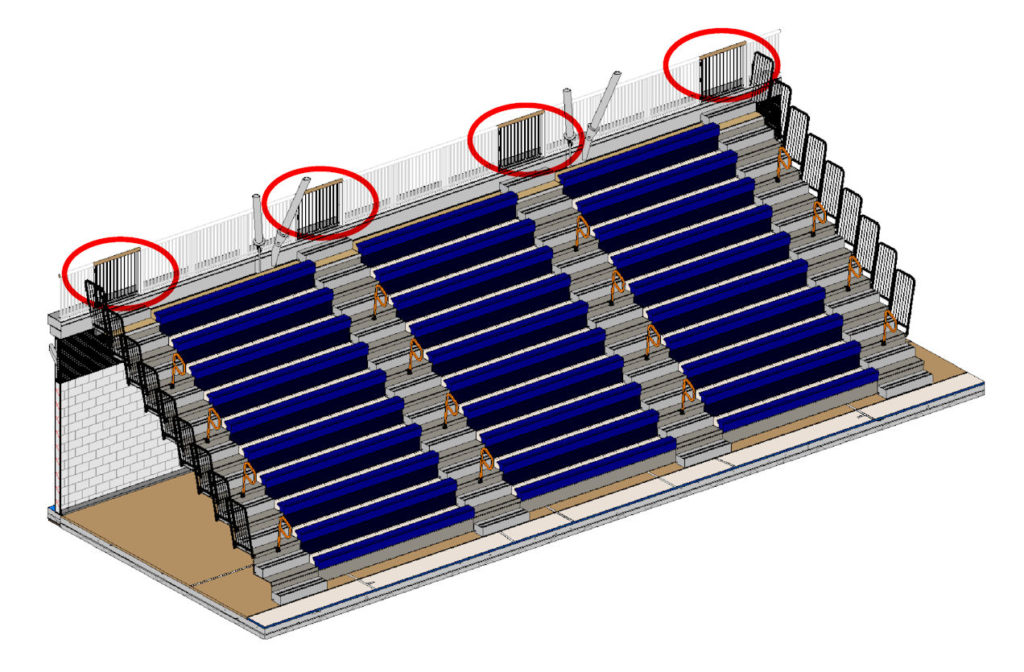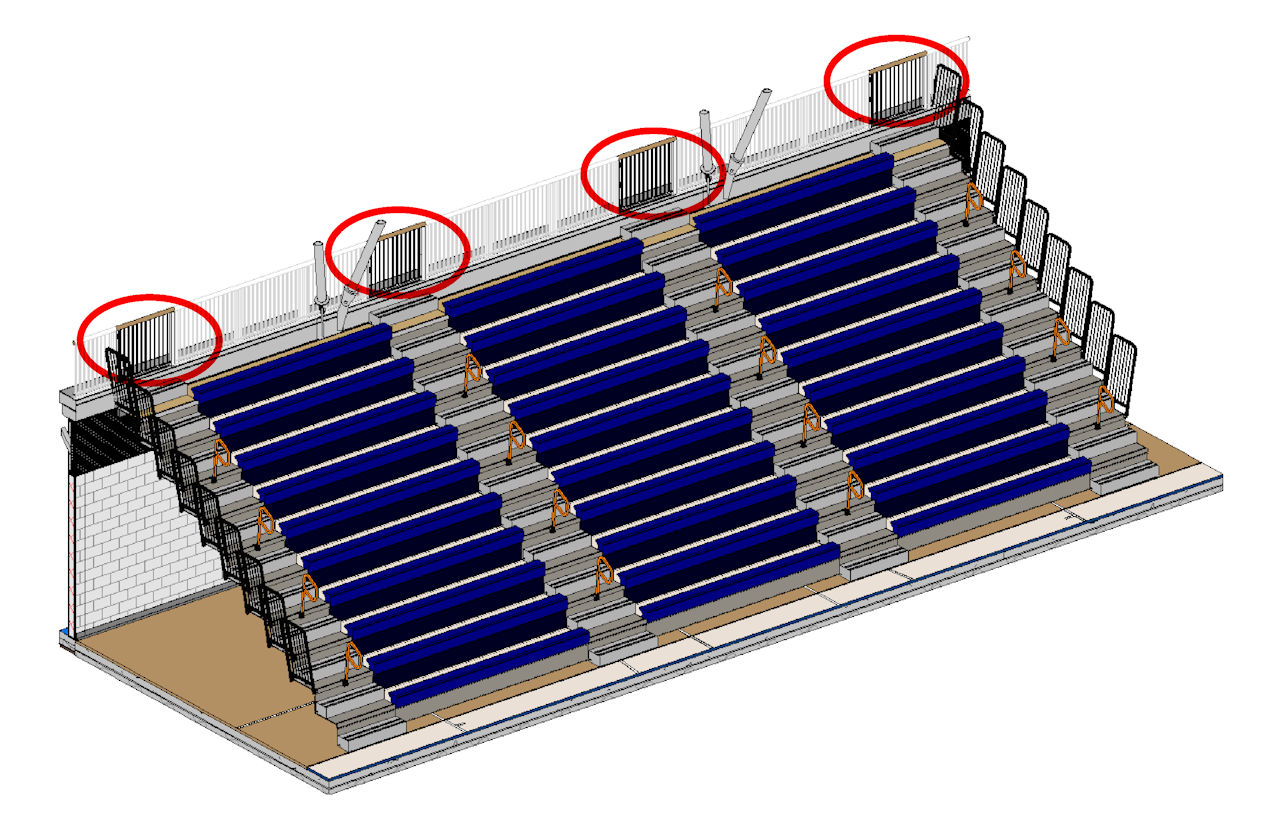I’m curious whether any of you have run across this application before, and how it was handled. In the image below you can see the situation – the guards at the top of the bleachers need to prevent access to the bleachers when they are not in use, but those same gates have to allow egress when the bleachers are occupied. The AHJ’s concern is that the bleachers could be extended for use and the guards accidentally left in place, preventing egress in that direction.
I checked the IBC, as well as ICC-300 – Standard for Bleachers, Folding, and Telescopic Seating, and Grandstands, and didn’t find any specific requirements. It seems like it must be a fairly common situation, so let me know if you have seen it before or have ideas about a solution that would be acceptable to the AHJ.
WWYD?
You need to login or register to bookmark/favorite this content.






This is very common in sports facilities. Normally this is a removable rail and not a gate which is put in place by the arena staff when the bleachers are retracted to their nested position and then removed when they are pulled back out into spectator mode. The removable guards are never in place when the bleachers are extended.
There are lots and lots of precedents for this. The AHJ sounds like a real fun guy!
I saw this where there were sheer mag locks in the gates that were tied into the extension of the Telescopic Seating. When the seating was extended, the gate unlocked. I do not know how the switching was done, just noticed it and asked as I was concerned about the gate opening when the seating was retracted.
One thing I have detailed on a number of “gates” for a pool area are Detex V40 exit device.
Provide swinging gates that swing only in the direction of egress.
Well I thinking egress is not required in two directions??
We did this with electric locks on the gates and an interface with the bleacher controls. Very complicated and it took a lot of tweeking both in design and during installation. Basically the gates were locked when the bleachers were retracted(ing). Only when the bleachers were fully extended do the electric locks unlock.
How did you wire the electric locks to operate during a power outage? Fail safe? Fail secure?
Or were the electric locks tied to a generator/batteries, and never lost power?
In most of the cases I’ve seen where people would enter bleachers from below, there would be adequate egress below the bleachers to evacuate people in them. If bleachers are loaded from above, the gates would have to be open to allow such loading. I suppose it might be possible that people might be admitted to the bleachers through one gate while the others are locked, but that seems unlikely because it would necessitate having people walk an excessive distance along the bleachers. Further, even if that did occur, it would only be a problem if the area below the bleachers didn’t provide adequate egress.
Perhaps a good approach would be to use a cables-and-pulley mechanism to connect the bleachers to the gates. Connect a cable to the bottom row, run it straight back and up to a spot above and to the side of the gate, and then down through a “buckling knee” mechanism. Then place a weight on the cable so that fully extending the bottom row (and thus all rows above it) will raise the weight to the point that it pulls on the knee and opens the gate.